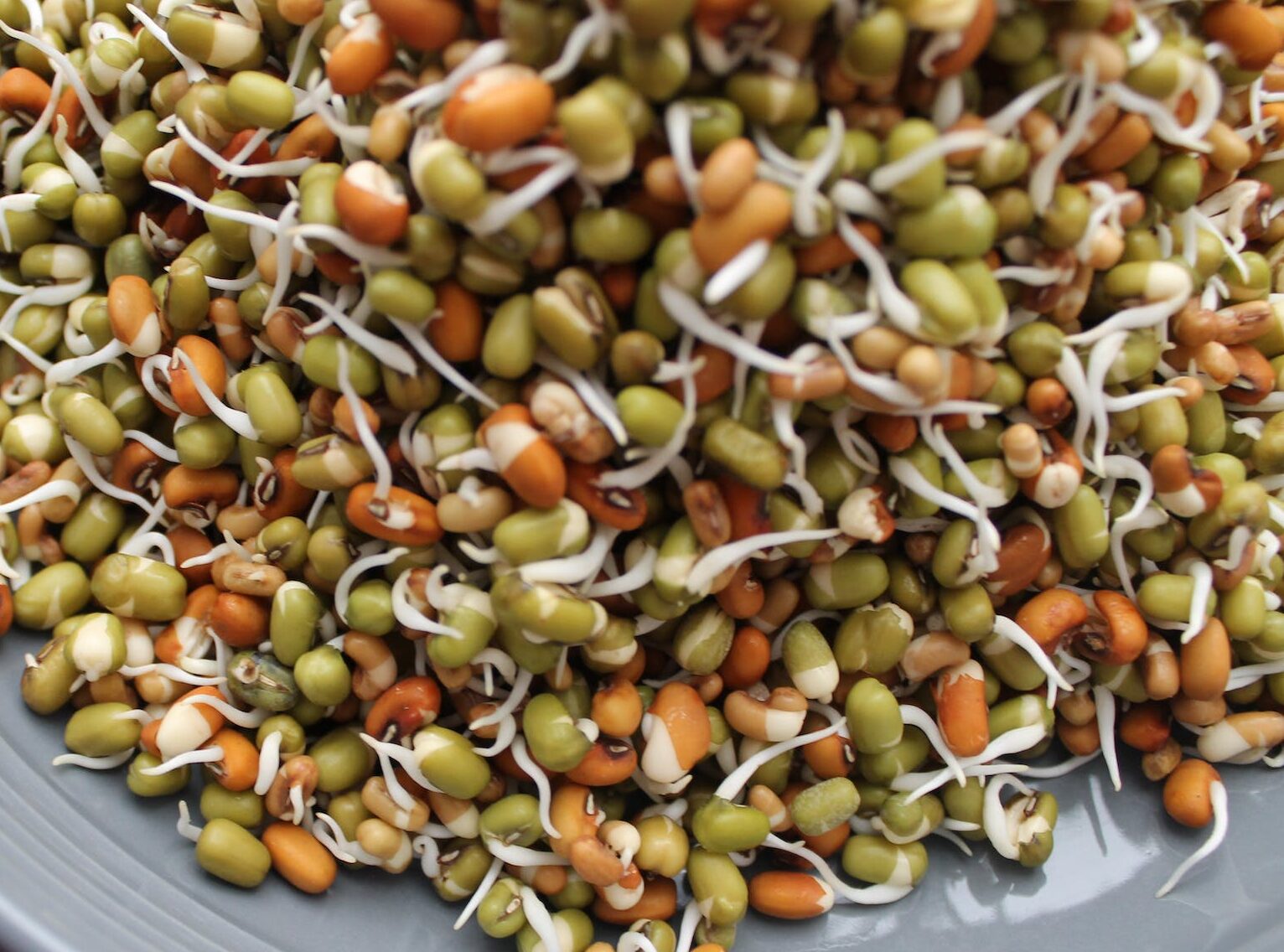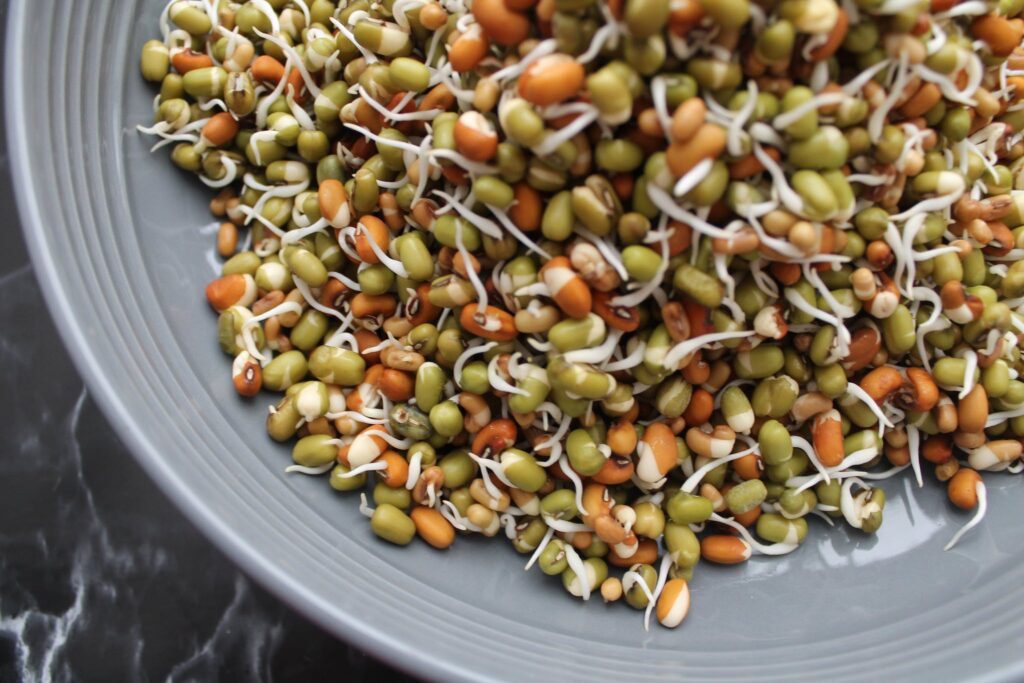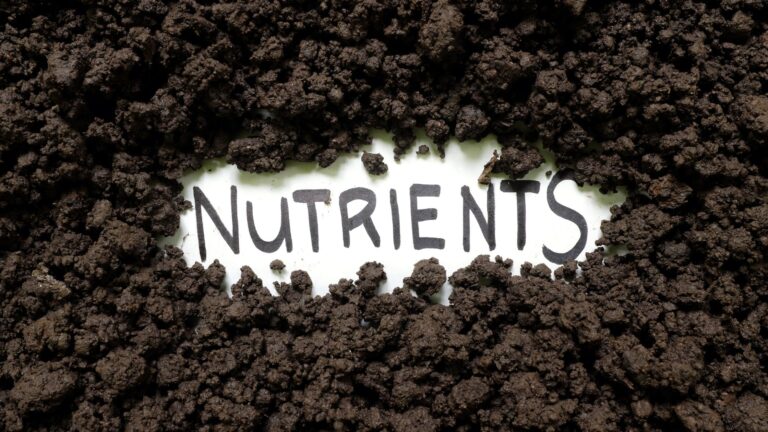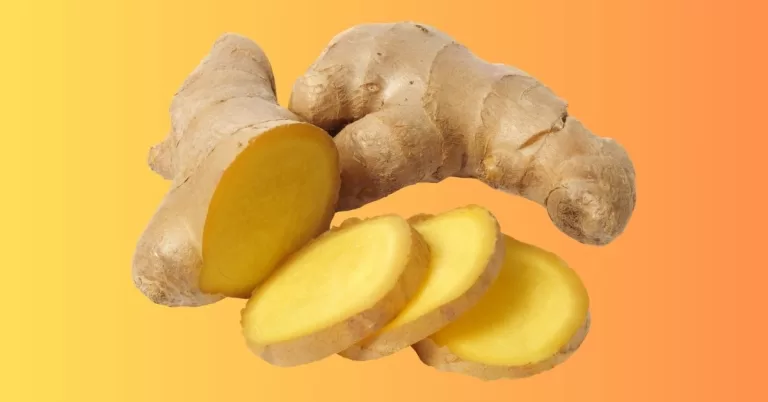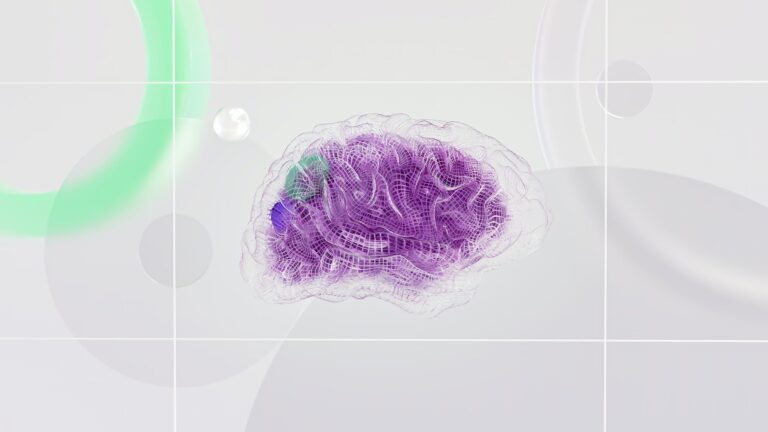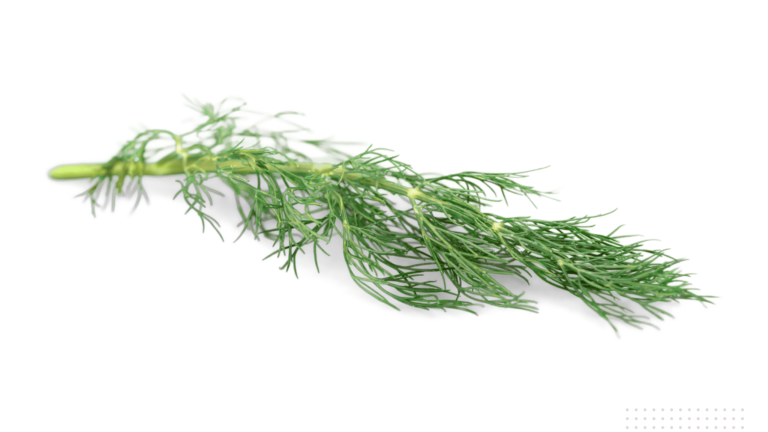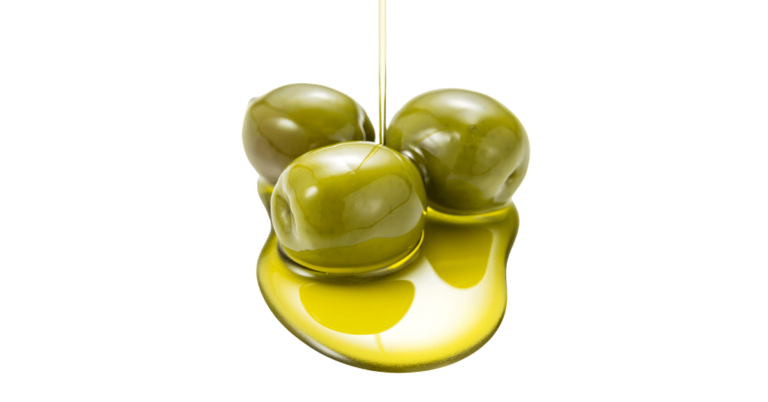The Mung Bean Sprouts High Value In Dietary Wellness
Organic Mung Bean Sprouts are a highly valuable source of bio-active nutrition, mainly due to their numerous compounds and exceptional nutritional profile.
These sprouts are an exceptional source of plant-based protein, fibre, and essential vitamins and minerals such as Vitamin C, Vitamin K, Folate, and Potassium.
Additionally, they contain potent bioactive compounds such as saponins, flavonoids, and phenolic acids, which are associated with several therapeutic actions, including reduced inflammation, improved digestion, and boosted immunity.
Key Points In This Article
Incorporating organic mung bean sprouts into a dietary routine is an easy way to reap some of their dietary benefits.
This article will examine an overview of organic mung bean sprouts, their dietary actions, therapeutic properties, and related case studies, and provides a brief overview of Ayurvedic principles on sprouts.
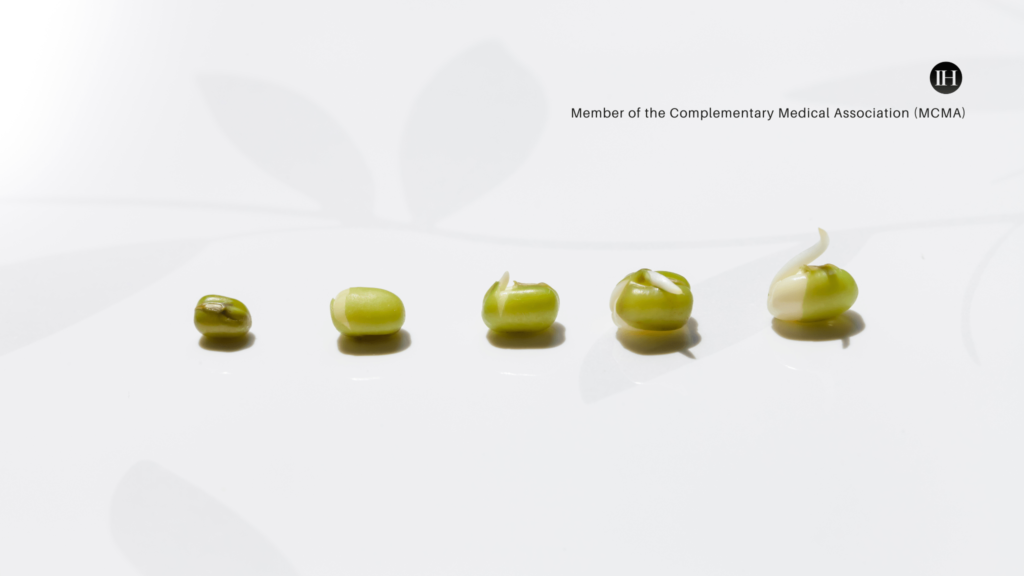
Brief Overview of Mung Bean Sprout
Mung bean sprouts are the sprouted form of mung beans scientifically known as Vigna radiata.
A common ingredient in Asian cuisine that has a crunchy texture and mildly sweet flavour. They are low in calories and nutrient-dense, depending on the cooking method.
The bean is also a good source of protein, fibre, vitamins, and minerals source. Interestingly, mung bean sprouts are easy to grow at home and can be harvested within a week.
Selecting An Organic Source Of Mung Bean Sprouts
Firstly, it is important to consider that organic food sources differ from conventional ones.
If health and well-being are the key factors behind a particular diet, then this becomes important to consider.
Frequent food sources can have cumulative effects on the body over time. Natural compounds can be a better long-term choice for several reasons, as they are generally more body-friendly, including absorption, digestibility and waste elimination.
Factors To Consider
Organic farmers grow foods without using synthetic fertilisers, pesticides, and GMOs, which are commonly used in conventional farming practices.
Therefore, reducing exposure to potential toxins through organic sources would provide a more comprehensive approach to daily diet for health conscious individuals.
Before discussing compounds in mung bean sprouts, let’s examine non-organic food sources briefly.
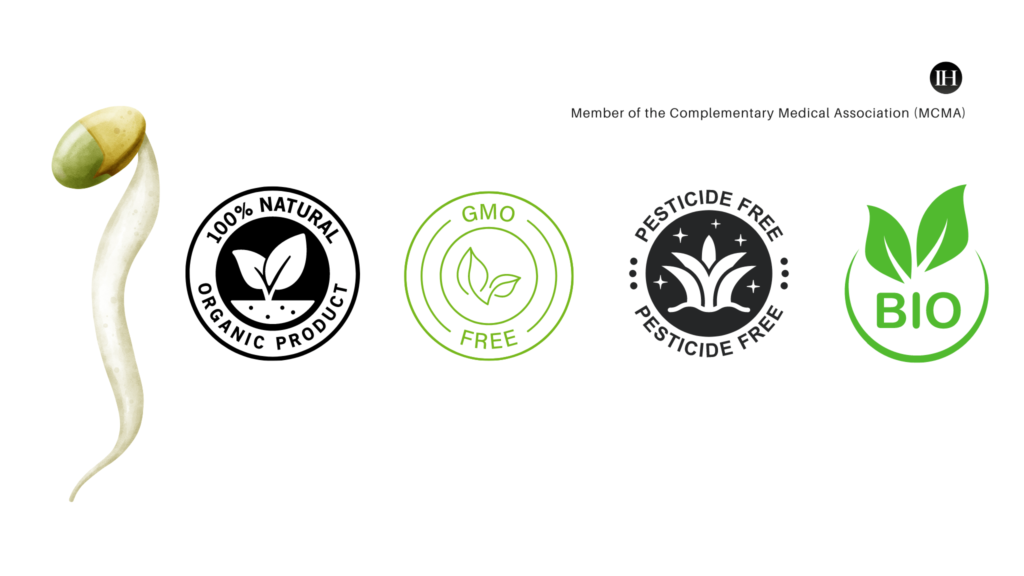
Example Case Study
For example, the report on pesticide “Organophosphates by NCBI” suggests that Organophosphates have potential benefits as pesticides, but their use comes with risks.”
Some risks are related to human gastrointestinal, metabolic, nervous system, cardiac, respiratory issues, etc.
This, however, depends on several other factors, such as exposure, length of exposure, and intensity.
It further states, “Exposure can be via food products such as wheat, flour, and cooking oil. Routes of exposure include inhalation, direct contact, and ingestion.
Therefore, considering the source of mung bean can play an integral role in obtaining body-friendly nutrients in the long run.
The Case For Germinated Mung Bean
According to (Tang et al., 2014) during germination, mung beans undergo various biochemical reactions that result in the synthesis of small active compounds from macromolecular substances.
Here are some key points from (Tang et al., 2014):
- Germination promotes absorption and utilisation and also leads to the formation and accumulation of active substances like polyphenols, saponins, and vitamin C.
- Germination also causes a decrease in anti-nutrient concentrations and an increase in free amino acids, making mung beans a good source of protein.
- Phenolic acids like gentisic acid, cinnamic acid, and p-hydroxybenzoic acid are found throughout germination, while gallic acid, chlorogenic acid, coumarin, and catechin levels increase at different stages.
- Sugar levels decrease from 60 to 75 hours during the final germination stage.
Despite the analysis of the number of compounds and nutrients present in germinated mung beans, Ayurvedic practices propose that the nutritional “value” of a germinated mung seed is distinct from that of an adult mung seed, a non-germinated whole seed.
Specifically, the “potency” of compounds may differ as they are seedlings and are not yet mature.
The latter section of this article will examine this some more.
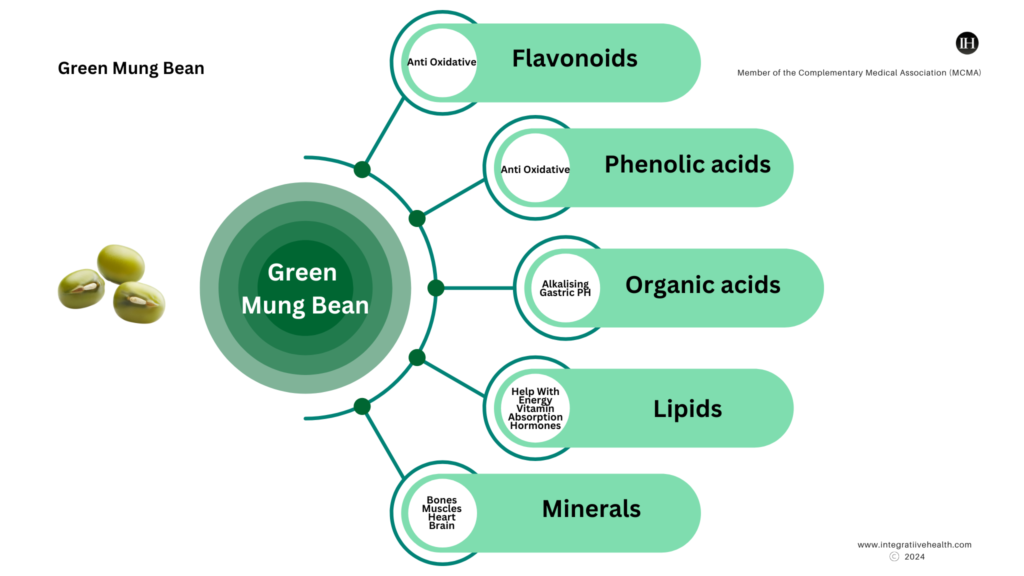
Bioactive Compounds In Mung Bean Sprouts
Mung bean sprouts contain diverse phytochemicals (bioactive compounds).
The seeds and sprouts of mung beans contain flavonoids, phenolic acids, organic acids, and lipids, which contribute to their pharmaceutical activities.
Some compounds in them include Vitexin, Isovitexin, Quercetin, Kaempferol, Apigenin, Gallic acid, Caffeic acid, Chlorogenic acid and others.
These compounds possess antioxidant, detoxifying, and neuroprotective properties, as well as several other significant pharmacological actions.
Additionally, as a complete food, the constituents of mung beans interact with one another and within the body when consumed, subject to food matrices.
Below are some of the therapeutic and dietary actions associated with the compounds present in these sprouts.
Dietary & Therapeutic Actions
Studies conducted in vivo, such as the one titled “Mung Bean (Vigna radiata L.): Bioactive Polyphenols, Polysaccharides, Peptides, and Health Benefits” published in Nutrients, have demonstrated that mung beans possess various health benefits.
These benefits include liver protection, modulation of lipids, positive metabolic influence, positive influence on cardiac wellness, hypoglycemic properties, and antihypertensive properties.
(Please note that this list is not exhaustive).
Furthermore, vitexin and isovitexin are identified as the major polyphenols, and peptides containing hydrophobic amino acid residues with small molecular weight show higher bioactivity in the mung bean (Hou et al., 2019).
Here are some points of consideration of their therapeutic actions:
- Helpful in healthy weight management & subsequent healthy weight loss.
- Helpful in digestive integrity.
- Provides a clean source of bioenergy.
- A good source of natural protein.
- Anti-inflammatory and antioxidative effects.
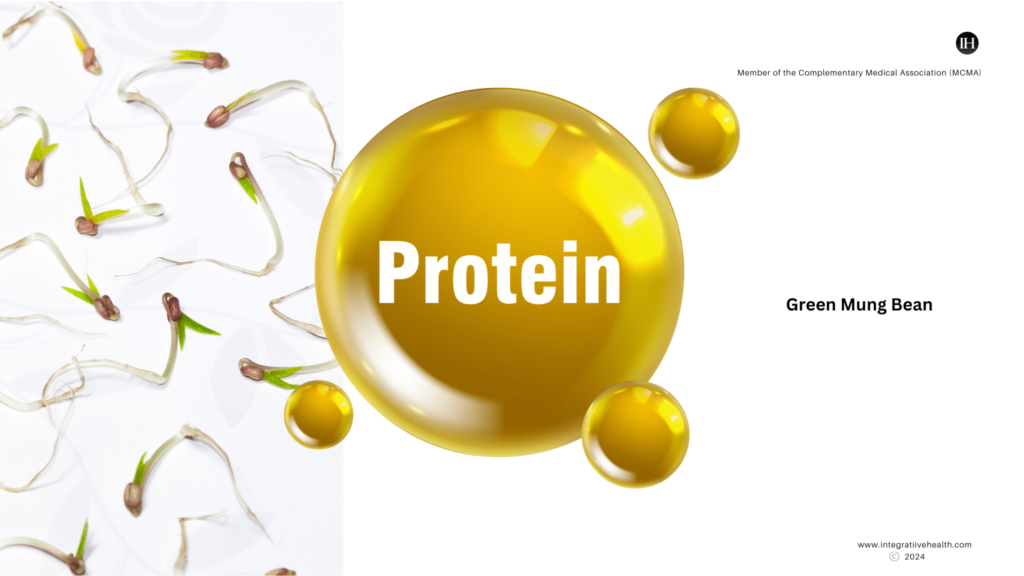
Protein Content In Mung Bean
The mung bean pre-sprout stage exhibits a remarkable protein content.
With a protein content of approximately 207gm, is 49.5g, they provide a significant amount of this essential nutrient (United States Department of Agriculture).
Furthermore, whole beans and sprouts are low in calories and fat, making them ideal dietary additions for individuals keen on weight management.
Other Nutrients
Mung bean sprouts also contain a substantial amount of natural magnesium, making them ideal as a natural source.
Moreover, they are replete with vitamins and minerals such as vitamin C, vitamin K, iron, and folate.
Nutritional Profile of Mung Bean (207 grams – 1 cup)
| Calcium 273 mg | Iron 14 mg |
| Magnesium 391 mg | Phosphorous 760 mg |
| Potassium 2590 mg | Sodium 31 mg |
| Zinc 5.55 mg | Copper 1.95 mg |
| Manganese 2.15 mg | Selenium 17 ug |
| Vitamin C (total ascorbic acid) 9.94 mg | Thiamin 1.28 mg |
| Riboflavin 0.482 mg | Niacin 4.66 mg |
| Pantothenic acid 3.95 mg | Vitamin B-6 0.791 mg |
| Folate 1290 ug | Choline 203 mg |
| Vitamin A 12.4 ug | Beta Carotene 141 ug |
| Vitamin E (alpha-tocopherol) 1.06 mg | Vitamin K 18.6 ug |
| Fatty 0.72 g saturated | Fatty acids monounsaturated 0.333 g |
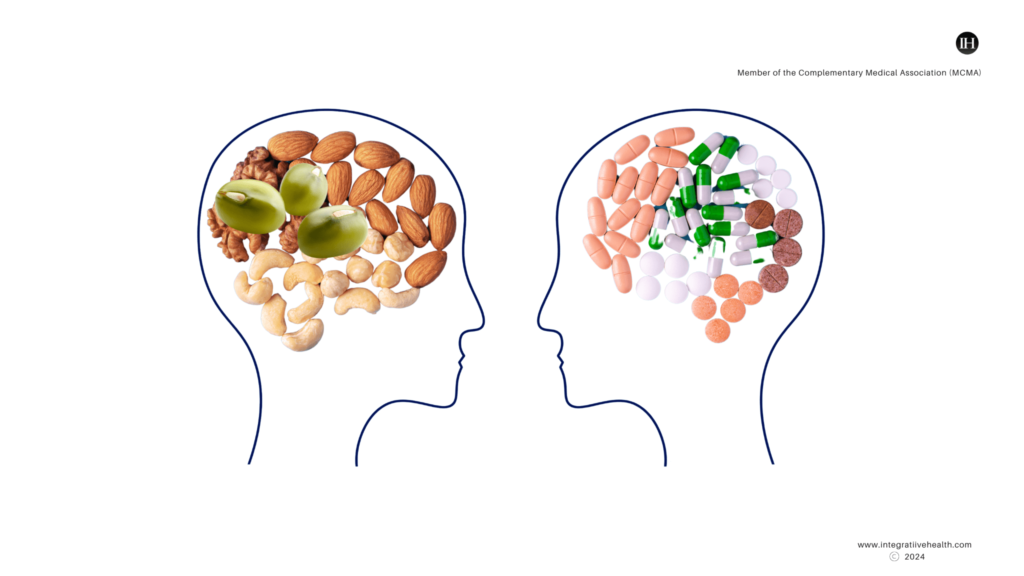
Two Important Considerations Of Mung Bean Sprouts
In the following section, the value of adding mung beans to a balanced diet is evaluated based on two factors.
1. High-Quality Bioactive Nutrition
Mung beans are a protein—and fibre-rich food rich with essential nutrients like potassium, folate, several compounds, and antioxidants. They promote heart and immune health and prevent chronic diseases. Low in calories and fat, they make an ideal choice for a healthy diet.
Sprouted or germinated beans may be helpful as part of a well-balanced diet.
2. Healthy Weight Loss
Additionally, in healthy weight loss, mung bean can help in proportional weight loss as part of a well-balanced routine.

The fibre in mung beans is particularly beneficial for weight loss because it slows the digestive process and keeps you feeling fuller for longer. This, in turn, reduces overall caloric intake, leading to gradual but sustainable weight loss.
Nourishing Weight Loss Rather Than Depleting The Body
However, the benefits of consuming this bean go beyond just weight loss, as it is rich with high-quality nutrients that support good nutrition and, therefore, support the body in several ways. As opposed to depleting it of vital requirements in place of losing weight.
Additionally, the protein in mung beans helps build and maintain muscle mass, which is crucial for weight loss.
When trying to lose weight, it’s important to ensure you lose fat, not muscle. Mung beans can help achieve this goal.
Incorporating whole beans and sprouted versions into a well-balanced diet, a ratio of 70% whole beans and an occasional 30% sprouted beans can be a good starting point.
The Bioactive, nutritional, and phytotherapeutic value of foods changes chemistry when cooked. A key component of bio-powered food is the process used to consume it. For example, paying attention to temperature, vessel, and secondary ingredients can help reap maximum benefits in terms of the molecular and bio constituents available in the food. Preserving the natural pH of food further adds to this.
IH
Ayurvedic Overview Of Mung Bean Sprouts (Green Gram)
Here are some considerations to keep in mind when germinating seeds and consuming them, according to Ayurveda.
- Ayurveda recommends including sprouts in a well-balanced diet, but only occasionally, as they have a different nutrient bioavailability than non-germinated seeds. The latter can be taken as part of a regular diet.
- It suggests this because it states that the nutritional efficacy is in a “state of transition” during germination, like embryo regrowth, whereby a new seed is sprouting and not fully matured.
- While sprouts may have a higher nutrition “quotient,” this doesn’t necessarily mean they have the same quality of nutrition as mature seeds or plants.
- Overall, the bean is helpful for Pitta and Kapha doshas. However, it may aggravate Vata if not consumed with healthy fats such as sesame seeds, grass-fed cow ghee, etc.
According to Tang et al. (2014), ancient books recognised mung beans for their detoxification properties.
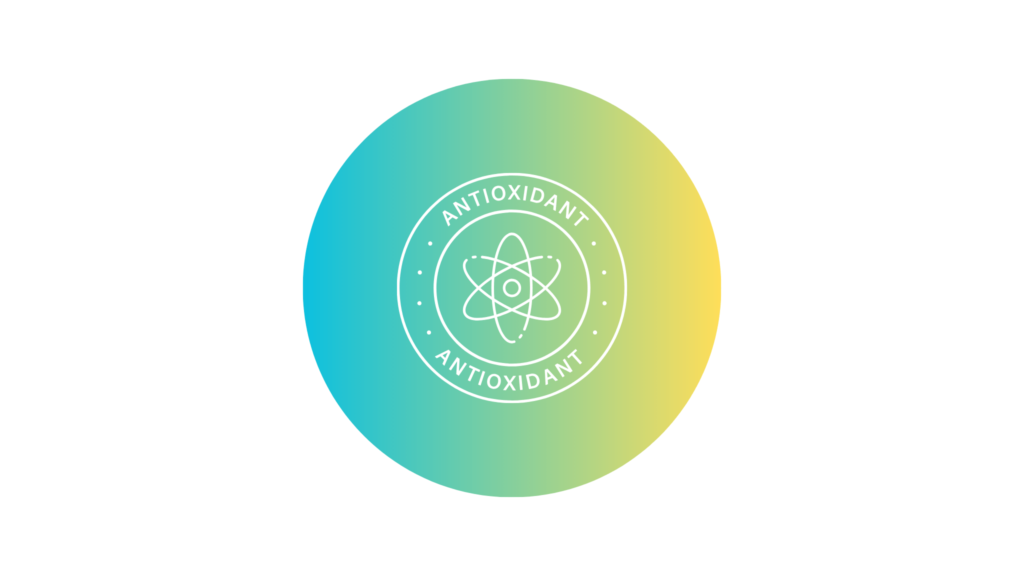
Summary
Mung bean sprouts are a good source of dietary food due to their vast nutritional profile consisting of vitamins, minerals, and antioxidants.
However, traditional disciplines suggest that sprouts should occasionally be consumed as part of a well-balanced diet.
These sprouts are characterized by their low caloric count and high fiber content, making them an ideal food option for those seeking weight management.
Moreover, these sprouts offer numerous health benefits, such as improving digestion, enhancing immunity, and reducing inflammation due to the compound vitexin, which also has neuroprotective qualities.
An organic source would add to its long-term health-conscious considerations.
Mung bean, in general, is nutrient-dense.
Precautions & Suitability
Precautions and personal responsibility are crucial. Check the suitability of any therapeutic diet or wellness routine for any person, pregnant, with allergies or chronic health issues. Seek the advice of a professional.
This is an informational post only and does not constitute as professional advice.
References in this article
Adeyinka A, Muco E, Regina AC, et al. Organophosphates. [Updated 2023 Nov 12]. In: StatPearls [Internet]. Treasure Island (FL): StatPearls Publishing; 2024 Jan-. Available from: https://www.ncbi.nlm.nih.gov/books/NBK499860/
https://www3.epa.gov/pesticides/chem_search/reg_actions/reregistration/fs_PC-019401_1-Mar-97.pdf
Easy Ayurveda: https://www.easyayurveda.com/2021/06/04/sprouts-food/#why_sprouts_are_not_ideal
Hou, Dianzhi et al. “Mung Bean (Vigna radiata L.): Bioactive Polyphenols, Polysaccharides, Peptides, and Health Benefits.” Nutrients vol. 11,6 1238. 31 May. 2019, doi:10.3390/nu11061238
Hou D, Yousaf L, Xue Y, Hu J, Wu J, Hu X, Feng N, Shen Q. Mung Bean (Vigna radiata L.): Bioactive Polyphenols, Polysaccharides, Peptides, and Health Benefits. Nutrients. 2019 May 31;11(6):1238. doi: 10.3390/nu11061238. PMID: 31159173; PMCID: PMC6627095.
https://en.wikipedia.org/wiki/Mung_bean
RHS: https://www.rhs.org.uk/plants/160347/vigna-radiata/details
Tang D, Dong Y, Ren H, Li L, He C. A review of phytochemistry, metabolite changes, and medicinal uses of the common food mung bean and its sprouts (Vigna radiata). Chem Cent J. 2014 Jan 17;8(1):4. doi: 10.1186/1752-153X-8-4. PMID: 24438453; PMCID: PMC3899625.
Easy Ayurveda: https://www.easyayurveda.com/2019/10/16/green-gram-mung-bean/#green_gram_in_diet
Cosme P, Rodríguez AB, Espino J, Garrido M. Plant Phenolics: Bioavailability as a Key Determinant of Their Potential Health-Promoting Applications. Antioxidants (Basel). 2020 Dec 12;9(12):1263. doi: 10.3390/antiox9121263. PMID: 33322700; PMCID: PMC7764680.
Discover the therapeutic value of incorporating Mung Bean into a Pitta dosha diet. It’s considered an exceptional protein for Pitta and a positive component for preserving metabolic strength.
MUNG BEAN
PITTA DOSHA

